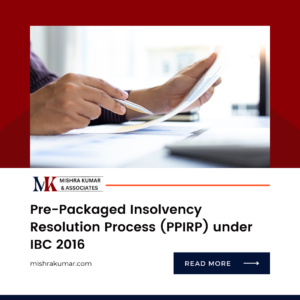Unveiling the Essence of Intangible Assets Valuations
Intangible assets are the hidden gems within a business, often holding substantial value but hidden from plain sight. To unlock their potential and understand their worth, Intangible Assets Valuations are crucial. These valuations are the key to assessing the intangible assets’ fair value, which encompasses patents, trademarks, copyrights, goodwill, and intellectual property.
This comprehensive guide takes a deep dive into the intricate world of Intangible Assets Valuations. It explores their significance, the complex analysis process, and the broader implications for businesses, investors, and financial professionals. Whether you are a business owner, investor, or intellectual property specialist, grasping the intricacies of intangible assets valuations is essential.
1. INTRODUCTION
Intangible assets are the hidden gems within a business, often holding substantial value but hidden from plain sight. To unlock their potential and understand their worth, Intangible Assets Valuations are crucial. These valuations are the key to assessing the intangible assets’ fair value, which encompasses patents, trademarks, copyrights, goodwill, and intellectual property.
This comprehensive guide takes a deep dive into the intricate world of Intangible Assets Valuations. It explores their significance, the complex analysis process, and the broader implications for businesses, investors, and financial professionals. Whether you are a business owner, investor, or intellectual property specialist, grasping the intricacies of intangible assets valuations is essential.
2. ANALYSIS
2.1 The Significance of Intangible Assets Valuations
Intangible assets are increasingly pivotal in today’s knowledge-driven economy. These valuations are instrumental in determining the fair value of intangible assets, which often represent a substantial portion of a company’s value. Accurate intangible assets valuations are crucial for various purposes, such as financial reporting, mergers and acquisitions, and intellectual property transactions.
2.2 Valuation Methods and Techniques
Intangible Assets Valuations involve a range of methods tailored to the type of asset and the specific valuation context. Common methods include the Relief from Royalty Method, the Cost Approach, and the Market Approach. The choice of method depends on the nature of the intangible asset and the purpose of the valuation.
2.3 Implications for Decision-Making
Valuing intangible assets has far-reaching implications for decision-making. For business owners, these valuations can guide licensing agreements, strategic planning, and financial reporting. Investors rely on them to assess the true value of a business’s intellectual property, and financial professionals use them for tax planning and regulatory compliance.
2.4 Challenges in Intangible Assets Valuations
Challenges in intangible assets valuations often stem from the unique characteristics of these assets. Subjectivity in valuation methods, estimating future cash flows, and accounting for changes in market conditions can be complex. Valuation experts must exercise professional judgment to arrive at precise valuations.
CONCLUSION
Intangible Assets Valuations are at the heart of modern business, reflecting the changing landscape of value in an increasingly digital and knowledge-based economy. Accurate valuations of intellectual property and intangible assets facilitate transparency, guide strategic decisions, and underpin business success in the 21st century.
As businesses continue to harness the value of their intangible assets, recognizing the significance of these valuations is vital. Business owners and professionals must appreciate the role of intangible assets in the modern economy and seek expert guidance when dealing with complex valuation scenarios.
FAQs
Q1: What is the primary purpose of intangible assets valuations?
Ans: The primary purpose of intangible assets valuations is to determine the fair value of intellectual property and intangible assets, which is essential for financial reporting, licensing agreements, and transactions involving these assets.
Q2: What methods are commonly used for intangible assets valuations?
Ans: Common methods include the Relief from Royalty Method, the Cost Approach, and the Market Approach, with each method suited to specific types of intangible assets and valuation contexts.
Q3: How frequently should a business conduct valuations of intangible assets?
Ans: The frequency of intangible assets valuations depends on factors like changes in ownership, significant financial events, or regulatory requirements. It’s essential to determine the appropriate timing based on the specific circumstances of the assets.
Q4: How do intangible assets valuations impact financial reporting and strategic planning?
Ans: Intangible assets valuations influence financial reporting by determining the value of intellectual property, which is reflected in the balance sheet and income statement. They also guide strategic planning by providing insights into the potential of intangible assets.
Q5: Can businesses conduct valuations of intangible assets on their own, or is professional assistance necessary?
Ans: While businesses can attempt valuations, it is often advisable to seek professional assistance from qualified valuers or intellectual property experts to ensure accuracy and compliance with relevant regulations and standards.
RECENT POSTS
- The implication of Stamp Duty on Scheme of Arrangement (Merger & Amalgamation):
- Pre-Packaged Insolvency Resolution Process (PPIRP) under IBC 2016
- BUY BACK OF SHARES V/S DIVIDEND
- Comprehensive comparative analysis of SEBI (Listing Obligations and Disclosure Requirements) (Second Amendment) Regulations, 2021.
- SEBI (Delisting of Equity Shares) Regulations, 2021-Imposes new responsibilities on the board of directors.

The implication of Stamp Duty on Scheme of Arrangement (Merger & Amalgamation):
The implication of Stamp Duty on Scheme of Arrangement (Merger & Amalgamation): The Scheme of Arrangement is a legal mechanism under corporate law that allows

Pre-Packaged Insolvency Resolution Process (PPIRP) under IBC 2016
Pre-Packaged Insolvency Resolution Process (PPIRP) under IBC 2016 The Insolvency and Bankruptcy Code (IBC) 2016, is a comprehensive legislation aimed at consolidating and amending laws

BUY BACK OF SHARES V/S DIVIDEND
BUY-BACK OF SHARES V/S DIVIDEND A dividend offers cash rewards to all shareholders in accordance with their stake in the company, whereas a share buyback

Comprehensive comparative analysis of SEBI (Listing Obligations and Disclosure Requirements) (Second Amendment) Regulations, 2021.
Comprehensive comparative analysis of SEBI (Listing Obligations and Disclosure Requirements) (Second Amendment) Regulations, 2021. Securities and Exchange Board of India (“SEBI”) vide notification dated May

SEBI (Delisting of Equity Shares) Regulations, 2021-Imposes new responsibilities on the board of directors.
SEBI (Delisting of Equity Shares) Regulations, 2021-Imposes new responsibilities on the board of directors. Securities and Exchange Board of India (“SEBI”) vide notification dated 10th

Summary of Insolvency and Bankruptcy Board of India (Liquidation Process) (Amendment) Regulations, 2024
Summary of Insolvency and Bankruptcy Board of India (Liquidation Process) (Amendment) Regulations, 2024 The Insolvency and Bankruptcy Board of India (IBBI) recently issued amendments to

